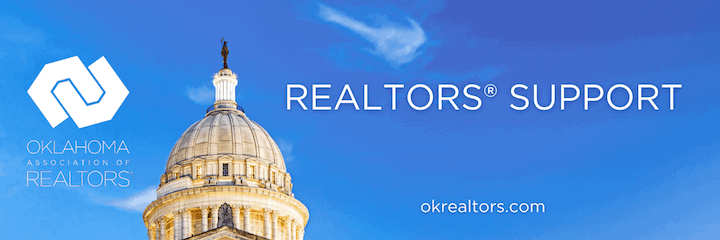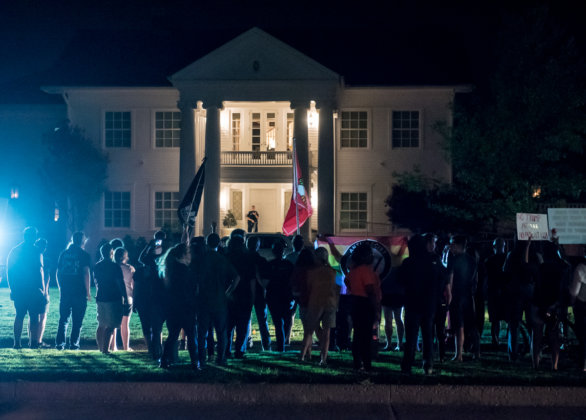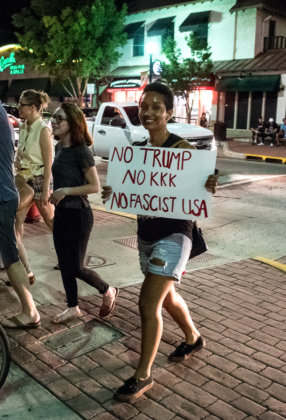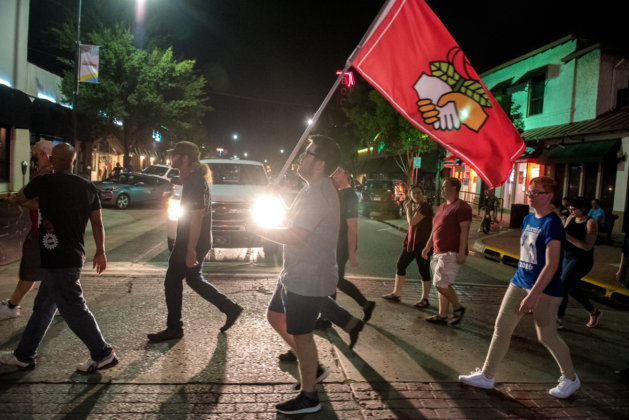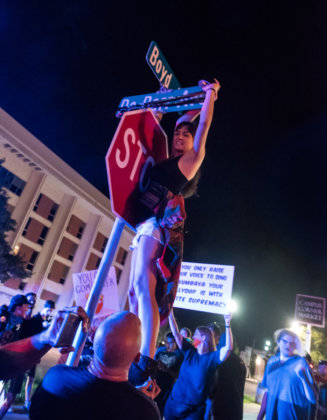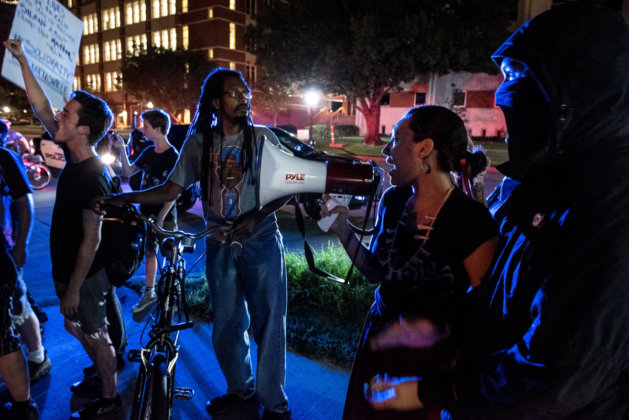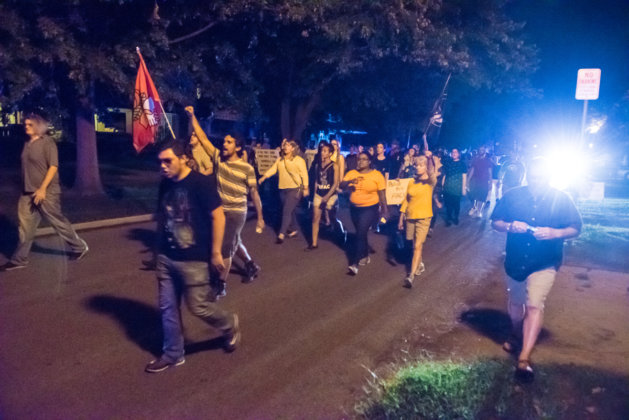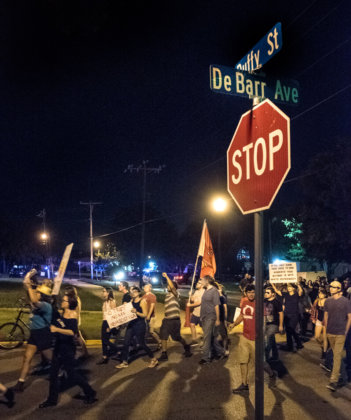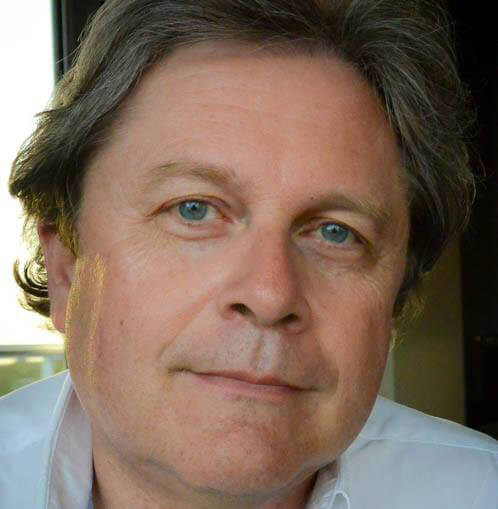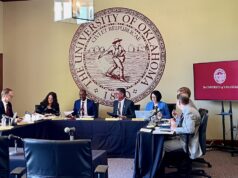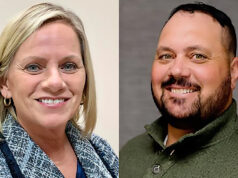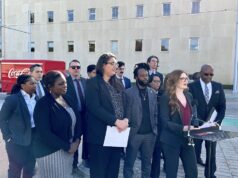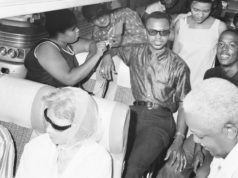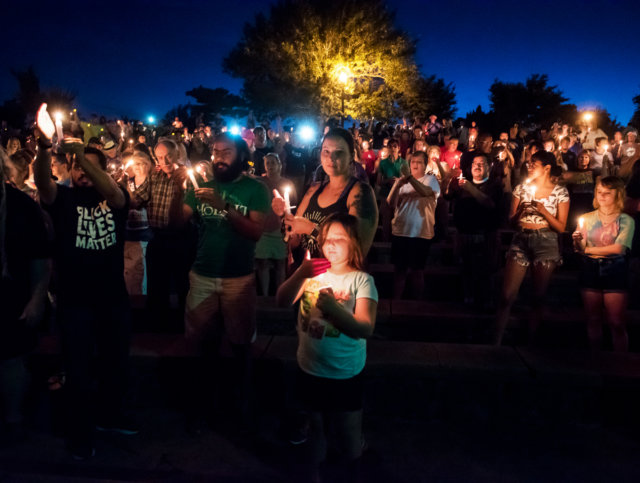
It was 50 years ago before a black man owned real estate in Norman, Oklahoma. The place was called a “sundown” town, meaning if you were of color you’d best be outside the city limits when night fell.
That is tough to imagine for Norman residents today who see their city as a progressive blue island in an overwhelmingly red state.
Norman’s black population today is about 4,530, per the 2010 Census. That 4.1 percent lags behind the state demographic of 7.4 percent and the national demographic of 13 percent.
Still, much has changed in 50 years. The majority of Norman’s black population no longer lives in the OU athletic dorm, which was the case in 1970. Housing discrimination and school segregation is illegal. Norman’s top law enforcement officer, Police Chief Keith Humphrey, is black.
That first black man to buy a home in Norman in 1967 was OU human relations professor George Henderson. He became a race-relations and civil rights scholar and has lived here ever since. He spoke Thursday night to a rally of about 600 that came to Andrews Park to support the protesters who faced white supremacy violence in Charlottesville, Virginia, this week.
Despite that violence and the messages of hatred in Charlottesville, Henderson cautioned the audience against responding in kind.
RELATED
Police diversity crucial, limited in repairing public trust by Brian Perlman
“I learned from my friend and mentor, Martin Luther King, Jr., don’t demonize your adversaries,” Henderson said. “Dislike the behavior but never the person. There has been too much demonizing going on around here.
“I don’t ever want to hurt my adversaries. What good does it do to belittle them? Now, their behavior is another matter.”
The Andrews Park event ended in a candlelight vigil in memory of the three people who died in Virginia.
But that did not end the evening for about 50 mostly young, white adults, some carrying flags and banners and chanting, “No Trump. No KKK, no fascist USA!” as they marched through dimly lit streets to DeBarr Avenue, a long block of early 20th century homes and rental properties adjacent to Campus Corner.
The street is named after Edwin DeBarr, one of OU’s founding faculty members who came to Norman in 1892. DeBarr later became the first vice president of the university.
He also was the state grand dragon of the Ku Klux Klan in Oklahoma in the 1920s.
His name was removed from a campus building in the 1980s because of that affiliation, but the City of Norman has not removed his name from the street.
Protesters encircled the street sign at the DeBarr and Boyd intersection. One climbed the sign pole and wrapped black tape across the DeBarr Avenue name, a rejection of what the group found offensive.
It is inexplicable that this municipality has let the DeBarr Avenue street name stand this long — for three decades after OU removed it from the chemistry building just two blocks away on the North Oval.
“DeBarr” Avenue has existed the entire time Henderson has lived here.
And while there certainly have been changes to Norman during that time, one must wonder how much change is necessary to rid the community of the ghosts of a racist past — or, maybe more importantly, to rid it of the demons of a racist present.
As the young crowd chanted its way through Campus Corner, I wondered if changing a street name — or in the case of some southern cities, removing of Civil War monuments — will effectuate the change of attitudes needed, or whether it will be a salve for the community’s collective guilt, allowing us to wipe our hands free of any complicity.
The remarks made by Henderson in Andrews Park resonated as I watched the protesters.
“We change attitudes and behavior one person at a time,” he said.
Henderson said those hoping to change attitudes about race and equality must first look to themselves.
“Streets must be changed if they are oppressive and offensive. Buildings perhaps must be changed too, and statues and whatever else you want to do.
“But first of all — Michael Jackson said it well — if you want to make a change, then look in the mirror and change the person you are looking at. It starts with us.”
Photos from the Normal vigil
